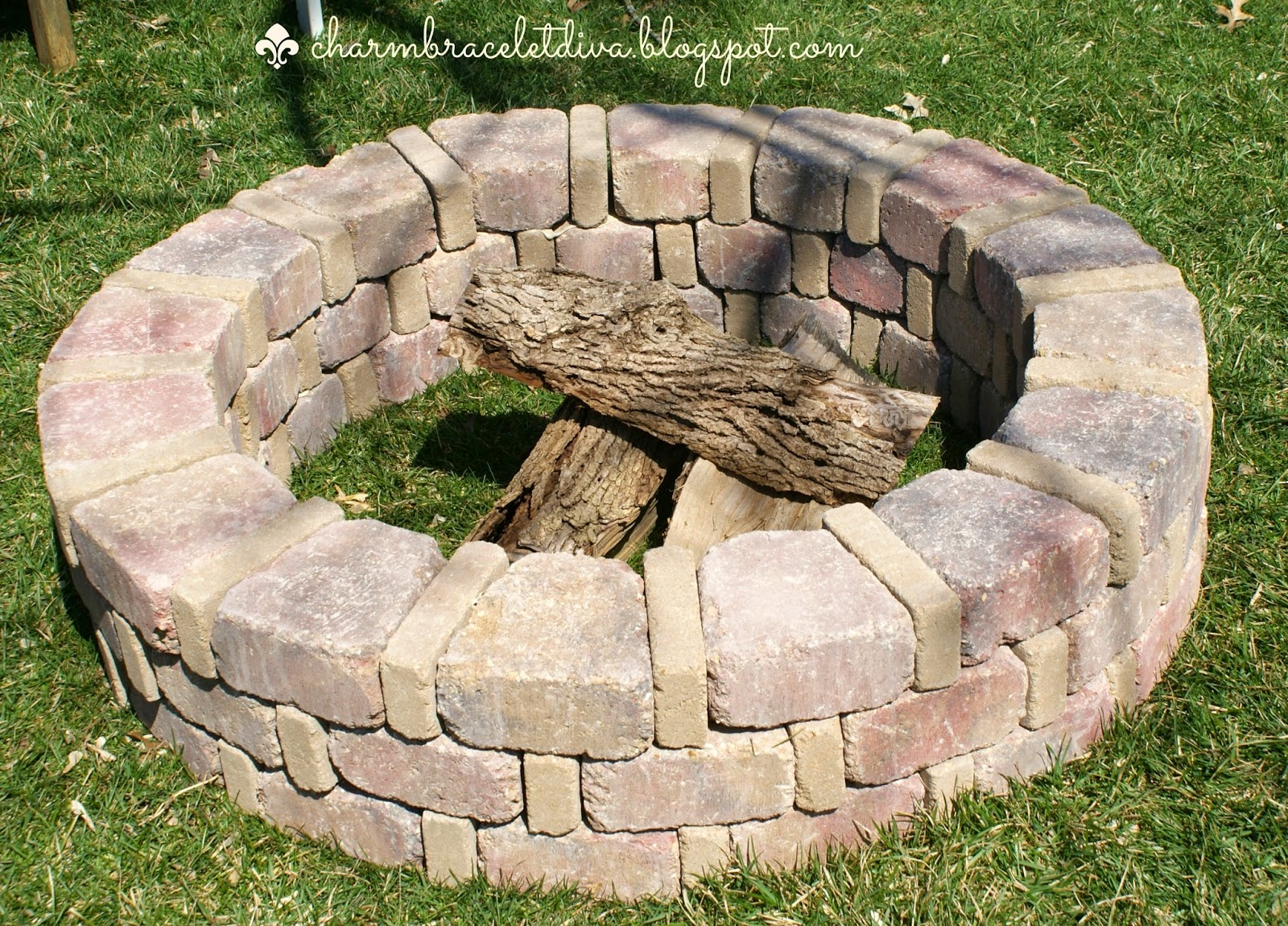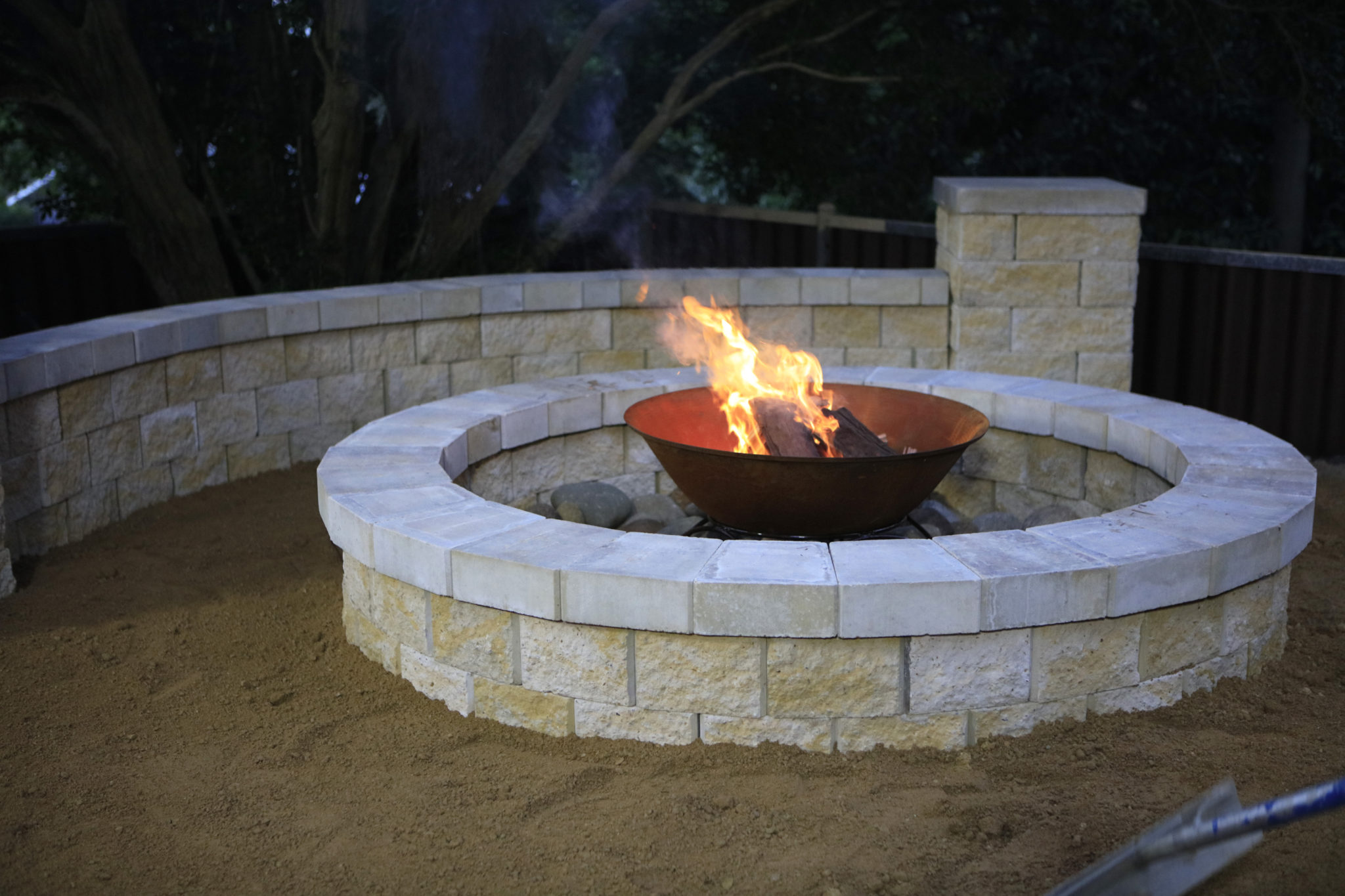How to build your own fire pit – Embark on a journey of creating your own fire pit, a captivating centerpiece that transforms your outdoor space into a sanctuary of warmth and ambiance. This comprehensive guide will equip you with the knowledge and techniques to design, construct, and maintain a fire pit that will ignite unforgettable moments.
From selecting the ideal materials to mastering construction methods, we’ll guide you through every step of the process, ensuring a safe and successful outcome. Let’s delve into the art of crafting your very own fire pit, where memories are forged and laughter echoes amidst the crackling flames.
Materials and Tools
Embarking on the construction of a fire pit necessitates the acquisition of appropriate materials and tools. The choice of materials hinges on the intended purpose and aesthetic preferences of the fire pit. Let’s delve into the diverse options available.
Bricks
- Firebricks: Engineered to withstand high temperatures, these bricks are ideal for the firebox and lining the pit’s interior.
- Clay bricks: Commonly used for constructing the outer walls, they offer durability and a traditional aesthetic.
Stones
- Natural stones: Irregularly shaped stones, such as river rocks or fieldstones, lend a rustic charm to fire pits.
- Manufactured stones: Uniformly sized and shaped, these stones provide a more polished and contemporary look.
Metal
- Fire pit rings: Pre-fabricated rings made of steel or cast iron serve as a convenient base for the fire pit.
- Metal plates: Can be used to create a fire pit base or as a protective cover for the surrounding area.
Tools
- Shovel: For digging the pit and moving materials.
- Trowel: For spreading mortar or cement.
- Level: To ensure a level base and walls.
- Measuring tape: For accurate measurements.
- Safety glasses and gloves: For protection during construction.
Design and Planning

Before building your fire pit, take some time to design and plan its appearance and location. Consider the shape, size, and materials you want to use. Also, think about where you want to place the fire pit in your yard, taking into account safety factors like proximity to structures and vegetation.
When choosing the shape of your fire pit, you have several options. Round fire pits are popular because they are easy to build and provide a cozy atmosphere. Square or rectangular fire pits are also common, and they can be more modern in appearance.
If you want something more unique, you could consider a hexagonal or octagonal fire pit.
Size
The size of your fire pit will depend on the size of your yard and the number of people you typically entertain. A small fire pit is ideal for intimate gatherings, while a larger fire pit is better for larger groups.
Keep in mind that you will need to leave enough space around the fire pit for seating and safety.
Location
When choosing a location for your fire pit, there are a few things to keep in mind. First, you will want to place the fire pit in a safe location, away from any structures or vegetation that could catch fire.
Second, you will want to choose a location that is convenient for you and your guests. Finally, you will want to consider the prevailing wind direction in your area so that the smoke from the fire does not blow towards your house or other structures.
Construction Methods
Constructing a fire pit involves careful preparation and execution. The methods employed vary depending on the design and materials chosen. This section provides a comprehensive guide to the step-by-step process, ensuring a safe and durable fire pit.
The construction process typically includes preparing the base, laying the materials, and creating the pit. Each step requires attention to detail and adherence to safety guidelines.
Dry Stacking
Dry stacking is a method that involves assembling stones or bricks without using any bonding material. It relies on the interlocking shape and weight of the materials to hold the structure together.
- Prepare a level base of compacted soil or gravel.
- Place the first layer of stones or bricks around the perimeter, ensuring they are level and stable.
- Continue stacking layers, overlapping the joints and alternating the direction of the stones or bricks.
- Use smaller stones or bricks to fill in gaps and create a solid structure.
Mortar Bonding
Mortar bonding involves using a mixture of cement, sand, and water to bind the stones or bricks together. This method provides greater stability and durability compared to dry stacking.
- Prepare a mortar mix according to the manufacturer’s instructions.
- Apply a layer of mortar to the base and the first layer of stones or bricks.
- Place the stones or bricks in the desired pattern, ensuring they are level and plumb.
- Continue stacking layers, applying mortar between each layer.
- Allow the mortar to cure for the recommended time before using the fire pit.
Metal Fabrication, How to build your own fire pit
Metal fabrication involves welding or bolting metal components to create the fire pit. This method offers flexibility in design and allows for the incorporation of custom features.
- Cut and shape metal sheets or plates to create the desired shape and size.
- Weld or bolt the components together, ensuring secure connections.
- Attach legs or a base for stability.
- Finish the metal surface with paint or a protective coating to enhance durability.
Finishing and Maintenance

To ensure the longevity and durability of your fire pit, it is crucial to apply a protective coating or sealant. This will shield the pit from the elements, preventing cracking, rusting, or discoloration.
Regular maintenance is also essential to keep your fire pit in optimal condition. Cleaning, inspecting, and repairing the pit as needed will extend its lifespan and enhance its safety.
Cleaning
Regularly remove ashes and debris from the fire pit to prevent buildup. Use a brush or shovel to clear away any remaining embers or ash. Avoid using water to clean the fire pit, as it can damage the sealant or coating.
Inspecting
Periodically inspect the fire pit for any cracks, rust, or other damage. Check the sealant or coating for any signs of peeling or fading. If any damage is found, address it promptly to prevent further deterioration.
Repairing
If any cracks or damage are discovered, repair them as soon as possible. Use a suitable sealant or patching material designed for fire pits. Follow the manufacturer’s instructions carefully to ensure a proper repair.
Final Wrap-Up: How To Build Your Own Fire Pit
As you complete your fire pit, a sense of accomplishment will wash over you. You’ve not only built a functional centerpiece but also created a gathering place that will enrich your outdoor experiences. Whether you’re roasting marshmallows under the starry sky or sharing stories around a roaring fire, your fire pit will become a cherished part of your home.
Remember, building and maintaining your fire pit is an ongoing process. With proper care and attention, it will continue to provide warmth, ambiance, and countless memories for years to come.
